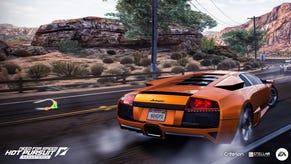Face-Off: Need for Speed: Hot Pursuit
Law and order it now?
| Xbox 360 | PlayStation 3 | |
|---|---|---|
| Disc Size | 6.6GB | 7.06GB |
| Install | 6.6GB (optional) | - |
| Surround Support | Dolby Digital | Dolby Digital, 5.1LPCM, 7.1LPCM, DTS |
Criterion Games' Burnout Paradise was a revelation for its time - a gameplay and technical accomplishment on a par with the best of the platform holders' first-party developers in a release that was equally impressive on both Xbox 360 and PlayStation 3. If anything, Need for Speed: Hot Pursuit is an even closer cross-platform product, and a remarkable 9/10 game to boot.
The studio's technical leads discussed their philosophy towards cross-platform development in a special two-part interview, and introduced us to the refined Chameleon Engine in the recent Need for Speed: Hot Pursuit tech inquisition.
But now's the time to put all the claims made by the studio to the test! Let's kick off with the comparison assets. There's a 360/PS3-specific gallery along with a bonus triple-format effort which includes the PC version operating at 720p. On top of that, there's the requisite head-to-head movie...
The games are visually identical. Seriously. You will see minor differences in the shots but this is entirely down to the nuances of the lighting scheme - random placement of overhead cloud cover can fundamentally change the lighting and exposure level in any given scene. It makes 100 per cent identical comparison shots an impossibility, but enough evidence remains to prove that this is the case. Midway through the comparison gallery you may spot what seems to be a lower precision effect on the wet road on PS3 - but again, looking to the sky reveals different lighting conditions and later shots re-establish that the processing on this element is indeed identical.
Where we do see a difference is in the audio implementations - you'll note that the PS3 version supports all of the surround options available from the hardware, including 7.1 and DTS support. As usual, owing to its HDMI 1.2 interface, Xbox 360 is 640kbps Dolby Digital 5.1 only.
In terms of the performance level, we also see an equivalent experience with gameplay locked at 30FPS on both consoles (in our tests we spotted just one aberration where 360 momentarily dropped a couple of frames), with no tearing: similar to Burnout Paradise, Criterion has v-synced the game. The implementation of v-sync does mean that you do see a more noticeable drop in performance on certain elements of the racing intros and during crashes and takedowns. However, with these effects already running in slow motion, dropped frames are not really an issue at all and it's not as if the gameplay experience is being compromised in any way.
So with the platform parity issues between the HD consoles sorted out, the discussion moves on. Historically, Criterion has been a champion of 60FPS gaming - seeking to capture the essence of the pure arcade experience with ultra-crisp, low-latency controls while at the same time providing state-of-the-art visuals. On the flip side, the Need for Speed games have traditionally run at the more standard 30FPS - on console, at least.
Criterion went with the series staple refresh rate for Need for Speed: Hot Pursuit, but used the doubling of rendering time per frame to introduce a range of new technologies. First and foremost there's a Killzone 2-style implementation of deferred rendering, which makes the superb level of detail and the 15km draw distance possible. Lighting also gets a substantial upgrade over what was seen in Paradise.
However, some very vocal racing purists seriously aren't happy about the drop to 30FPS based on their experiences of the recent Hot Pursuit demo. This isn't really the best workout for the handling as the demo cars are amongst the slowest in the game, but regardless, the lowering of frame-rate will obviously have an impact on the controller response. For many fans, the most relevant Face-Off isn't between console platforms as much, but between this new game and Criterion's previous work on Burnout Paradise.
The developer has gone to extraordinary lengths to preserve the crisp control of Paradise as much as possible. Criterion's plan here, as discussed in the recent Digital Foundry tech interview, was to adopt a single-threaded model to keep latency down to a minimum: most games run with separate game logic and rendering threads. Indeed, even Burnout Paradise did this. Need for Speed eschews threading in this manner in order to bring down latency as much as possible.









